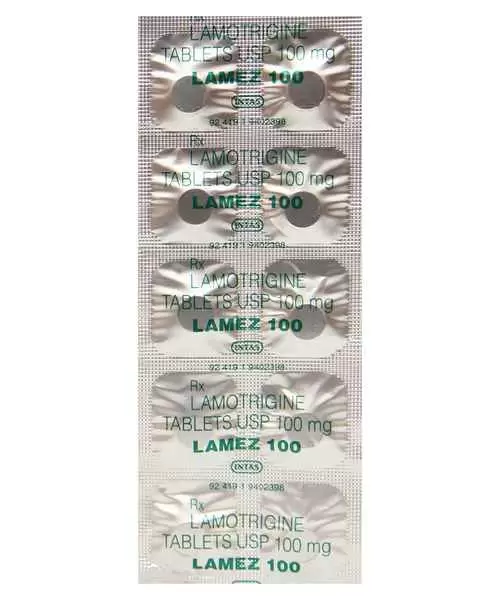🧠⚡💊 Lamotrigine 100mg Tablet: Stabilizing Mood & Controlling Seizures
Lamotrigine 100mg is a prescription medication classified as an antiepileptic drug (AED) or mood stabilizer, primarily used for the treatment of epilepsy and bipolar disorder. It helps regulate electrical activity in the brain, reducing the risk of seizures and mood episodes. Due to its dual benefit in managing seizures and stabilizing mood, Lamotrigine is widely used in both neurology and psychiatry.
This 100mg strength is typically used in the maintenance phase after a lower starting dose, and dosing is carefully titrated to minimize the risk of serious skin reactions.
🔬 Mechanism of Action
Lamotrigine works by inhibiting voltage-sensitive sodium channels, which stabilizes hyperexcitable neurons. It:
-
Reduces excessive glutamate release (a neurotransmitter involved in seizure generation)
-
Modulates neuronal firing
-
Improves mood regulation in bipolar disorder
This action makes it effective in treating both seizures and depressive episodes, particularly bipolar depression.
📌 Indications and Uses
✅ Epilepsy:
-
Partial-onset seizures (with or without secondary generalization)
-
Generalized tonic-clonic seizures
-
Lennox-Gastaut syndrome (a severe form of childhood epilepsy)
✅ Bipolar Disorder:
-
Maintenance treatment to delay recurrence of depressive or manic episodes
-
Especially effective in preventing depressive episodes
Lamotrigine is not typically used for acute mania.
💊 Dosage and Administration
-
Initial dosing usually starts at 25mg, then gradually increased to 100mg/day or more depending on the condition
-
The 100mg tablet is often a maintenance dose
-
Taken once or twice daily, with or without food
-
Must be titrated slowly to reduce the risk of serious skin reactions
Always follow a doctor’s titration schedule, especially if switching from or combining with other antiepileptic drugs.
⚠️ Precautions and Warnings
-
Risk of serious skin rashes (e.g., Stevens-Johnson syndrome), especially if dose is increased too quickly
-
Use caution in patients with liver or kidney impairment
-
Monitor for signs of suicidal thoughts or behavior
-
May cause dizziness or blurred vision—avoid driving until you know how it affects you
-
Pregnancy: May increase the risk of birth defects; discuss risks and benefits with your doctor
🤒 Side Effects
Common:
-
Headache
-
Dizziness
-
Sleepiness
-
Nausea
-
Blurred or double vision
-
Tremor
Serious (Seek medical help):
-
Severe rash or skin peeling
-
Fever, swollen glands
-
Suicidal thoughts
-
Liver dysfunction (yellowing of eyes/skin)
Report any unusual symptoms immediately, especially within the first 8 weeks of therapy.
🔄 Drug Interactions
-
Affected by other antiepileptic drugs like valproic acid (which increases lamotrigine levels)
-
May lower the effectiveness of oral contraceptives
-
Dose adjustments may be necessary when used with enzyme-inducing drugs like carbamazepine or phenytoin
🧊 Storage Instructions
-
Store at 15–30°C
-
Keep in a cool, dry place
-
Protect from moisture and light
-
Keep out of reach of children
📝 Conclusion
Lamotrigine 100mg tablet is a versatile and effective medication for managing both epilepsy and bipolar disorder. Its ability to prevent seizures and stabilize mood, particularly depressive episodes, makes it a key component in long-term neurological and psychiatric treatment plans. However, due to the risk of serious skin reactions, it must be started at low doses and increased gradually under medical supervision.
Note: This information is intended for educational purposes and should not replace professional medical advice. Always consult your healthcare provider for personalized recommendations.


Reviews
There are no reviews yet.